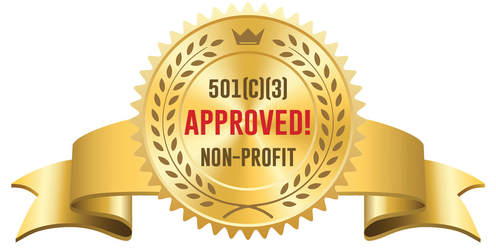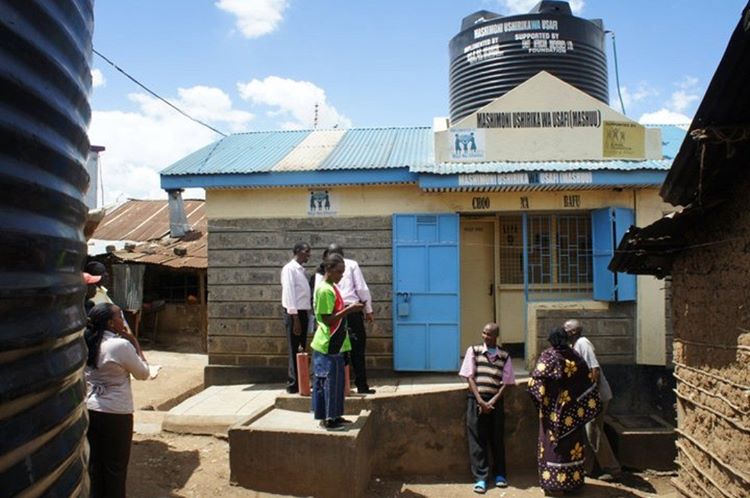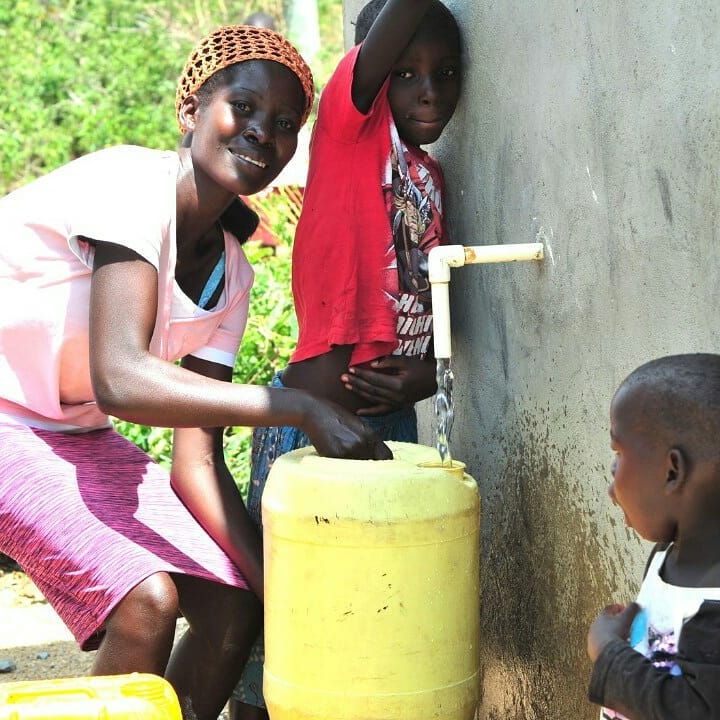Why the Drought Isn’t the Problem—Inequality Is
Drought response Kenya is in the spotlight once again. Failed rains have left millions hungry. Livestock are dying. Children are missing school. But this isn’t only about weather patterns. It’s about systems that leave millions vulnerable year after year.
The question is no longer when the rain will come. The question is: Why are some communities always the first to fall and the last to recover?
This blog explains:
- Why drought response Kenya must shift from relief to justice
- How inequality fuels the crisis
- What real solutions look like
- What Maji na Ufanisi and its partners are doing right now
- What you can do to support equity-based action
The Numbers Tell a Clear Story
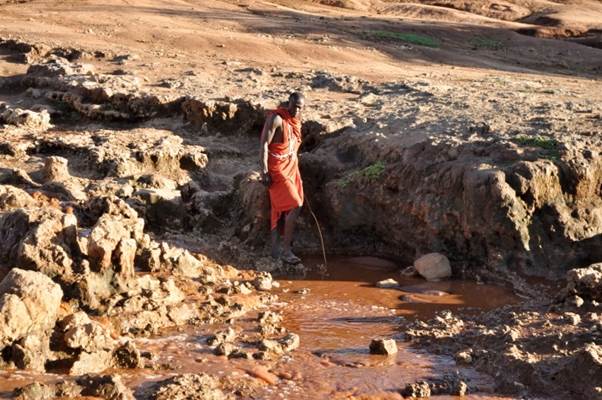
In 2023, drought response Kenya reached only part of the population in need. Out of more than 4.3 million Kenyans facing hunger, thirst, and loss of livelihood, just 2.9 million received any form of assistance. Over 2.6 million livestock died across the Arid and Semi-Arid Lands (ASALs), wiping out families’ primary source of income and nutrition.
These numbers are not abstract—they represent children out of school, mothers walking longer for water, and entire communities pushed deeper into poverty.
The ASALs span more than 80% of Kenya’s territory. They include counties like Turkana, Marsabit, Wajir, and Samburu. These are also the same counties with some of the highest poverty rates, lowest literacy levels, and weakest healthcare access in the country.
The overlap is no accident. When resources are scarce, those with the least always lose the most. The drought is hard—but inequality makes it devastating.
Drought response Kenya must recognise this imbalance. Only then can it be effective.
Drought Isn’t the Same for Everyone
Rainfall may be equal in measure, but its consequences are not. A few millimetres of rain—or a lack of it—affect regions, communities, and individuals differently depending on what support systems they have in place.
Drought response Kenya shows a repeated pattern: the hardest hit are always the same—poor households, women, remote villages, and pastoralist communities. Their suffering isn’t accidental. It’s built into the system.
Let’s break it down to understand where the gaps lie.
Geography Matters
Arid and Semi-Arid Lands (ASALs) are Kenya’s most drought-prone areas. They also happen to be the most neglected in terms of development. In these counties, paved roads are limited, health centres are distant, and access to clean water is unreliable.
When drought arrives, help is far. It takes longer to mobilise resources. Markets close. People must walk for hours to find water or food.
These regions receive fewer investments and limited budget allocations. As a result, drought in these areas turns into disaster faster.
Gender Makes It Worse
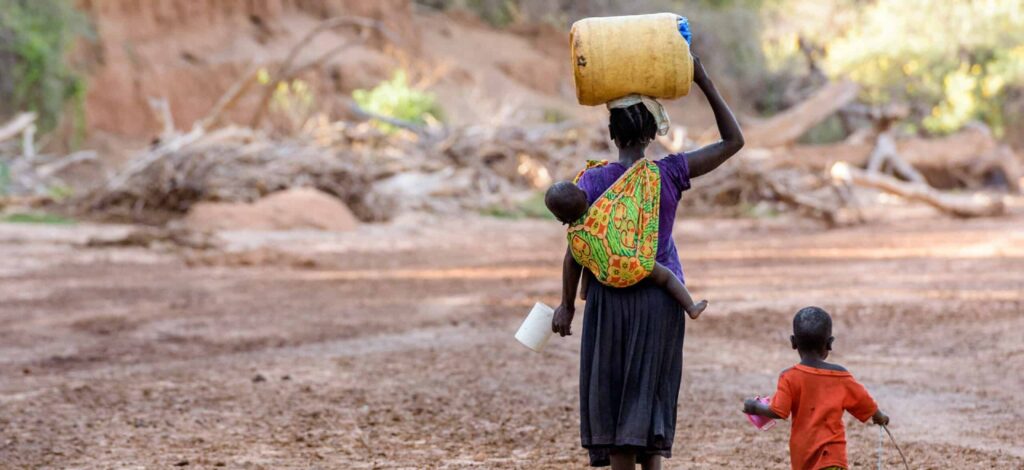
Women and girls pay the highest price in times of drought. Water scarcity forces them to travel farther, often through unsafe areas. Girls drop out of school to help fetch water or care for siblings.
Drought-related stress leads to spikes in gender-based violence and early marriage. Yet gender-specific responses in drought policy remain limited.
Many aid packages don’t include menstrual hygiene kits. Health messages often don’t reach women. And women’s voices are still underrepresented in drought response planning.
Drought response Kenya that ignores gender ends up deepening gender inequality.
Poor Households Fall Fast
In low-income homes, a single shock like drought destroys the entire safety net. There’s no savings account to fall back on. No livestock insurance. No kitchen garden or stocked pantry.
When livestock die, families lose their food, income, and cultural security. Children go to bed hungry. Schools become unaffordable. Illness goes untreated.
Drought response Kenya must prioritise these households. Without targeted support, they slide deeper into poverty after every dry season—until they can no longer recover at all.
Why We Must Stop Treating Drought Like a Weather Problem
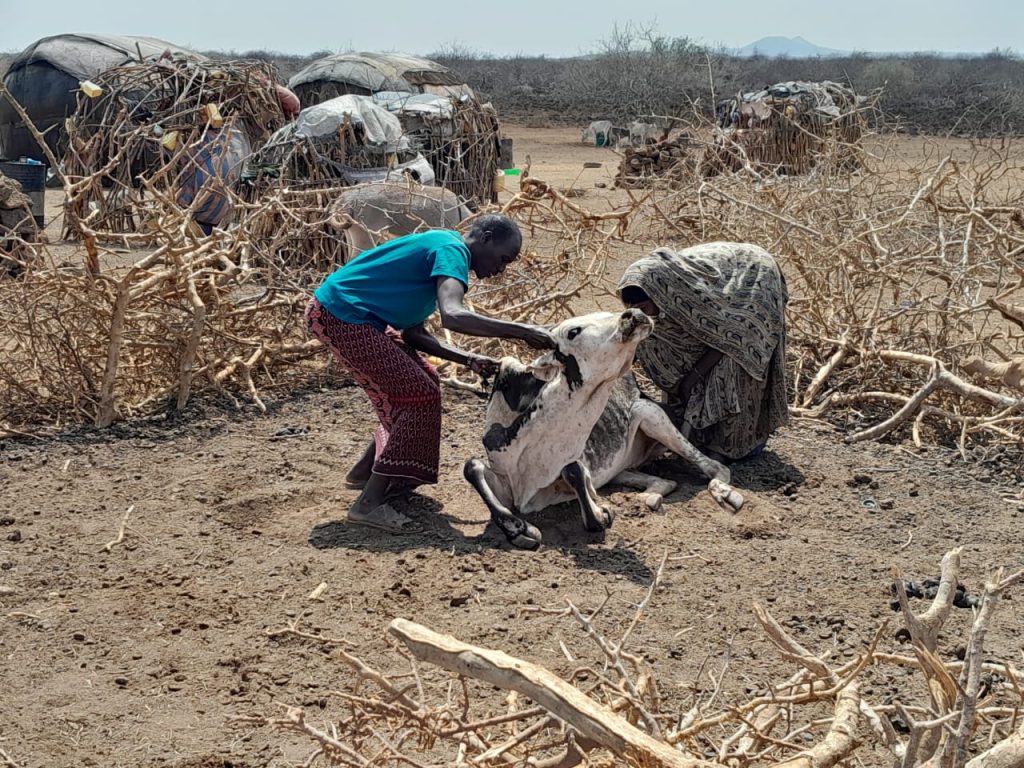
The failure of rainfall is not preventable. But the suffering caused by it is.
Drought response Kenya has to stop being reactive. Water trucking and food drops save lives. But they don’t solve the problem. They repeat it.
Here’s what’s missing:
- Social protection: Cash transfers and food programs before the crisis hits
- Resilient livelihoods: Drought-tolerant crops, sustainable grazing, local markets
- Early action: Not waiting for malnutrition before responding
- Access equity: Making sure the poorest and most remote are served first
Drought is natural. Inequality is not.
What Works in Drought Response Kenya
Drought response Kenya has seen progress when action is timely, inclusive, and driven by those most affected. The strongest outcomes come from models that move beyond short-term aid and address the structural gaps that make communities vulnerable.
These approaches work not because they are complex, but because they are practical, people-centered, and rooted in equity.
Early Warning Plus Early Action
Kenya’s National Drought Management Authority (NDMA) monitors rainfall trends, food prices, and vegetation conditions. It issues regular bulletins to flag risks early.
But information alone doesn’t save lives. Early warning only matters if followed by early action.
When support is delayed, families are forced to sell livestock at throwaway prices, migrate, or take children out of school. By the time emergency aid arrives, damage is already done.
Drought response Kenya must be proactive. Pre-arranged response plans, pre-positioned supplies, and emergency funds must be activated as soon as alerts go out.
Also read:Tackling Water Scarcity Challenges in Kenya’s ASAL Regions
Equity-Based Planning
Blanket approaches don’t work. Not everyone needs the same thing during drought.
People with disabilities face physical access barriers. Women have different hygiene needs. Some communities are cut off from main roads and services.
Drought response Kenya that delivers impact identifies these differences in advance. It tailors solutions accordingly.
Cash transfers, WASH kits, mobile health units, and safe water points should be planned with a clear priority: reach the hardest-hit first.
Community Leadership
No one understands local needs better than the people who live there. When communities lead, resources go farther, solutions last longer, and trust increases.
Water committees in drought-prone areas often know which boreholes are dry, which routes are safe, and what past interventions failed.
Local leaders can help identify the most vulnerable. Youth groups can innovate new solutions. Women’s groups can manage hygiene campaigns and water access.
Drought response Kenya that empowers communities builds true resilience—not just temporary relief.
Multi-Sector Response
Food is essential—but it’s not enough.
People also need clean water for drinking and hygiene. They need functioning health clinics. Children need to stay in school.
When one piece of support is missing, the whole recovery process suffers.
For example, a school feeding program helps—but if girls lack sanitary pads or safe water, they still stay home.
Drought response Kenya should always be multi-sector: combining food, WASH, education, health, and protection. Only then does it address the full scope of human need.
Maji na Ufanisi in Action: Fighting Inequality in Drought Response Kenya
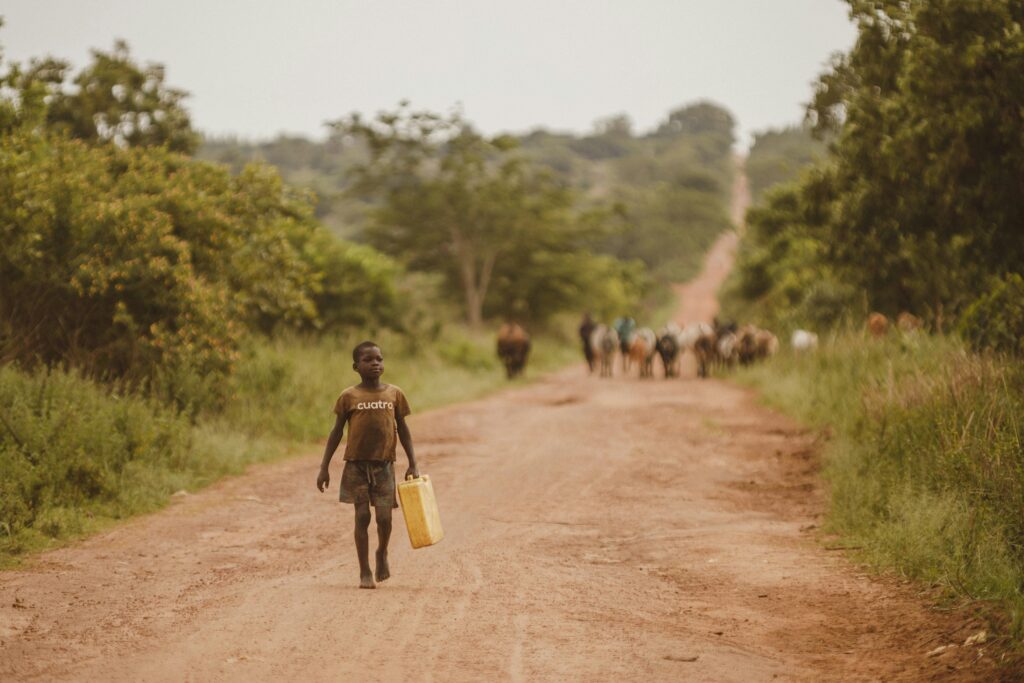
At Maji na Ufanisi, we believe drought response should start long before the rain fails. Our model is built on partnership, planning, and fairness. We don’t show up with one-size-fits-all aid. We work with communities to build systems that last.
Drought response Kenya must focus on those most at risk. That’s where our work begins—and where our results are strongest.
Here’s how we lead on the ground:
Equity-First Approach
We centre our WASH work around those often left behind—especially women, girls, and persons with disabilities. We ensure that clean water, sanitation, and hygiene solutions are safe, accessible, and meet diverse needs.
This includes gender-separated toilets, menstrual hygiene support, and inclusive design for people with mobility challenges.
Sustainable Water Systems
Quick fixes don’t work. We install long-term water solutions like solar-powered boreholes, protected springs, and rainwater harvesting tanks.
Our systems are designed for harsh environments in ASAL counties. They are built with community input, maintained locally, and monitored regularly.
Local Empowerment
We don’t run projects from Nairobi. We build local leadership.
We train water committees, youth groups, and women’s cooperatives to manage WASH infrastructure. They handle everything from repairs to water quality testing and community hygiene promotion.
This creates jobs, builds trust, and ensures systems don’t fail when external funding ends.
Livelihood Resilience
Access to water must be tied to livelihoods. That’s why we integrate climate-smart agriculture and hygiene-based micro-enterprises with our WASH projects.
We train smallholder farmers in water-efficient farming. We help women start businesses making and selling soap, reusable sanitary pads, and water containers.
Drought response Kenya must do more than feed people—it must empower them to thrive.
Advocacy
We speak up for structural change.
Maji na Ufanisi supports policy that increases investment in ASALs, strengthens WASH governance, and ensures marginalised voices are heard at every level.
We work with county governments, national ministries, and civil society to push for equity in budgeting, planning, and response.
This is what real drought response Kenya looks like—fair, inclusive, and community-driven. It’s not about doing more charity. It’s about doing development differently.
Why Inequality Must Be the Target
Drought response Kenya won’t truly succeed until the systems that allow suffering to persist are dismantled. Drought alone is not what devastates families. It’s the unequal conditions—who has access to support, who gets ignored, and who gets left out of recovery planning.
Real impact doesn’t come from more aid. It comes from smarter, fairer systems that protect those most at risk. That’s why inequality must be the central target.
Unequal Funding
Not all counties receive the support they need.
In 2023, Samburu County received only 13% of the budget it required for drought-related education support. That means schools lacked feeding programs, children dropped out, and teachers went unpaid.
In Wajir, only 40% of health needs were funded during the drought crisis. The rest went unmet. That gap meant sick children, unsafe pregnancies, untreated diseases.
Drought response Kenya must track where the money goes—and who is still waiting.
These are not technical gaps. They are moral ones.
Forgotten Voices
The people most affected by drought often have no seat at the table.
Remote communities in the ASALs are not always consulted. Women’s health and hygiene needs are underrepresented in planning. The traditional knowledge of pastoralist communities is ignored or undervalued.
This leads to programs that miss the mark—like water points located too far from homes or aid packages that overlook gender-based violence risks.
Drought response Kenya must begin with listening—then acting on what’s heard.
Long-Term Risk
When inequality is ignored, drought becomes a predictable crisis.
Communities suffer, recover slightly, then collapse again when the next dry season hits. Each cycle weakens them more—financially, socially, and emotionally.
Without systemic change, this isn’t disaster response. It’s disaster management on repeat.
If drought response Kenya continues to focus only on rain and relief, not on fairness and infrastructure, then the suffering will never end.
What You Can Do Right Now
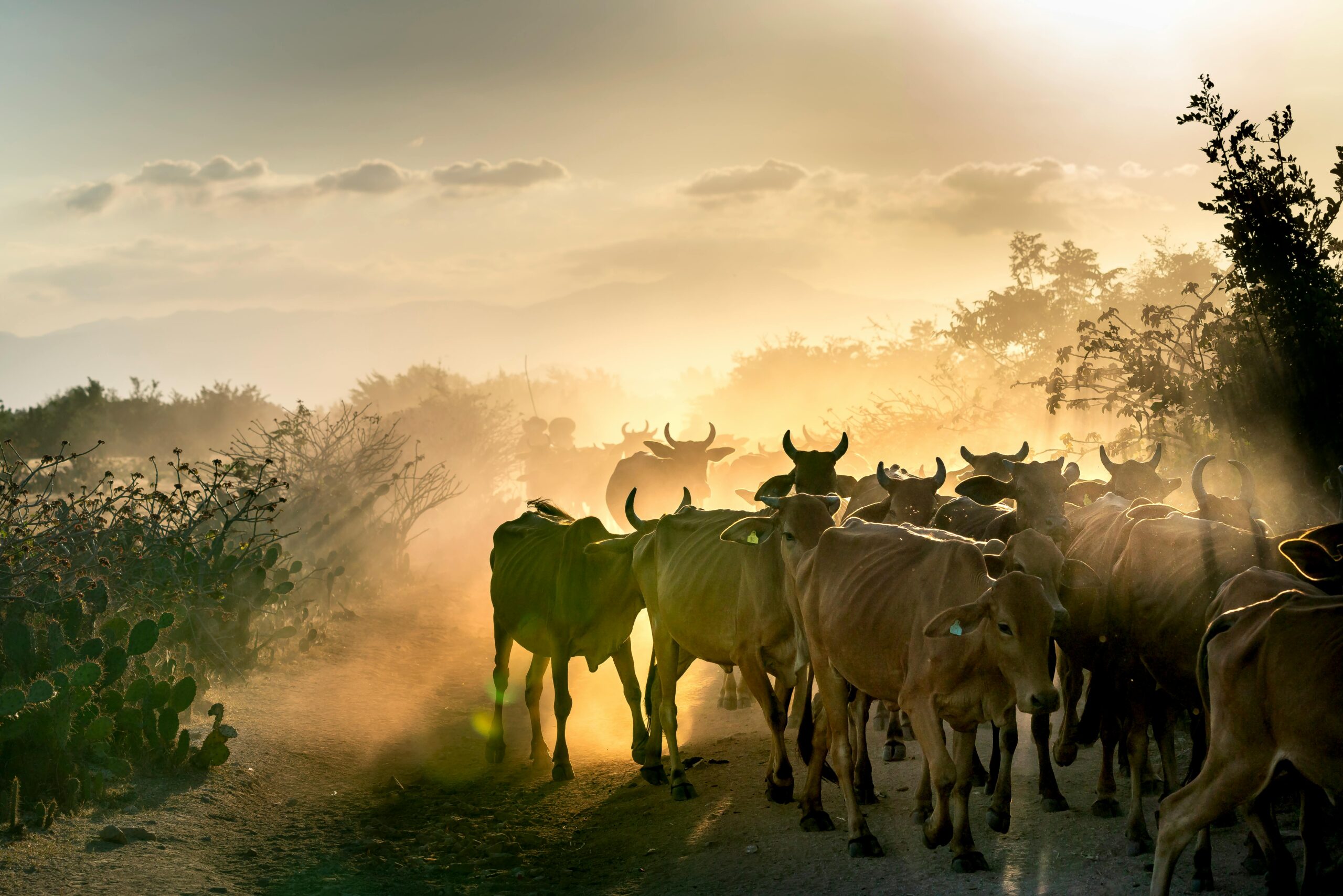
This isn’t just the government’s job. Or the UN’s. Or local NGOs’.
If you care about water, justice, health, or education—your voice and your choices matter.
Whether you’re a donor, policymaker, business leader, or supporter abroad—there are practical ways you can support a better drought response Kenya today.
Here’s what makes a real difference:
- Fund local groups
Support grassroots organisations already working in ASALs. They understand the needs. They deliver faster. And they stay long after the headlines fade. - Demand equity in data
Ask organisations to report not only how many people they reached—but who they reached. Was it women? People with disabilities? The most remote villages? - Tell better stories
When you share updates or support a campaign, focus on stories of dignity and resilience. Don’t reduce people to victims—amplify their strength and voices. - Push for fair funding
Write to your networks, funders, or decision-makers. Advocate for fair budget allocations to ASAL counties. Ask why some counties get half the support of others. - Support integrated solutions
Combine support across food, water, WASH, education, and gender protection. People don’t live in silos—responses shouldn’t either.
This is how real impact is built. Not with charity alone—but with choices that respect people’s rights and realities.
Wrap-Up: Drought Response Kenya Is About Justice, Not Rain
The biggest threat facing drought-affected communities in Kenya is not the climate. It’s the inequality that decides who gets to survive it.
Drought will return. That’s a fact. But repeated suffering doesn’t have to.
Until every family—whether in Marsabit or Mombasa—has equal access to water, services, and protection, this crisis will continue.
Drought response Kenya doesn’t need more trucks or bigger donations alone. It needs fairness. It needs early action. It needs voices from the margins brought into the centre.
We don’t need to do more. We need to do better.
And we can—if we make equity the standard, not the exception.
Frequently Asked Questions
- What is drought response Kenya?
It refers to coordinated efforts to help communities in Kenya survive and recover from drought—through food aid, water access, livelihoods, and long-term planning. - Why is inequality a bigger problem than drought itself?
Because drought affects everyone, but poor and marginalised groups suffer more due to lack of resources and weak safety nets. - Which regions are most affected in Kenya?
ASAL counties such as Turkana, Wajir, Garissa, Isiolo, and Marsabit face repeated drought emergencies. - What role does gender play in drought?
Women and girls face increased burdens during drought—from longer walks for water to greater risk of violence. - Is food aid enough during drought?
No. Communities also need water, sanitation, education, health care, and sustainable income options. - What is an equity-first response?
A strategy that focuses on helping those with the least access and highest risk—before others. - How does Maji na Ufanisi work in drought areas?
We provide safe water, empower communities, focus on WASH and gender inclusion, and advocate for structural reform. - What should donors support?
Donors should support early action, resilience-building, and community-led drought response Kenya initiatives. - What’s wrong with emergency-only response?
It saves lives in the short term but does not prevent future suffering. Only structural change builds real resilience. - How can someone like me help?Donate to trusted local organisations, share equity-focused stories, push for fair funding, and support solutions that reach the most excluded.

